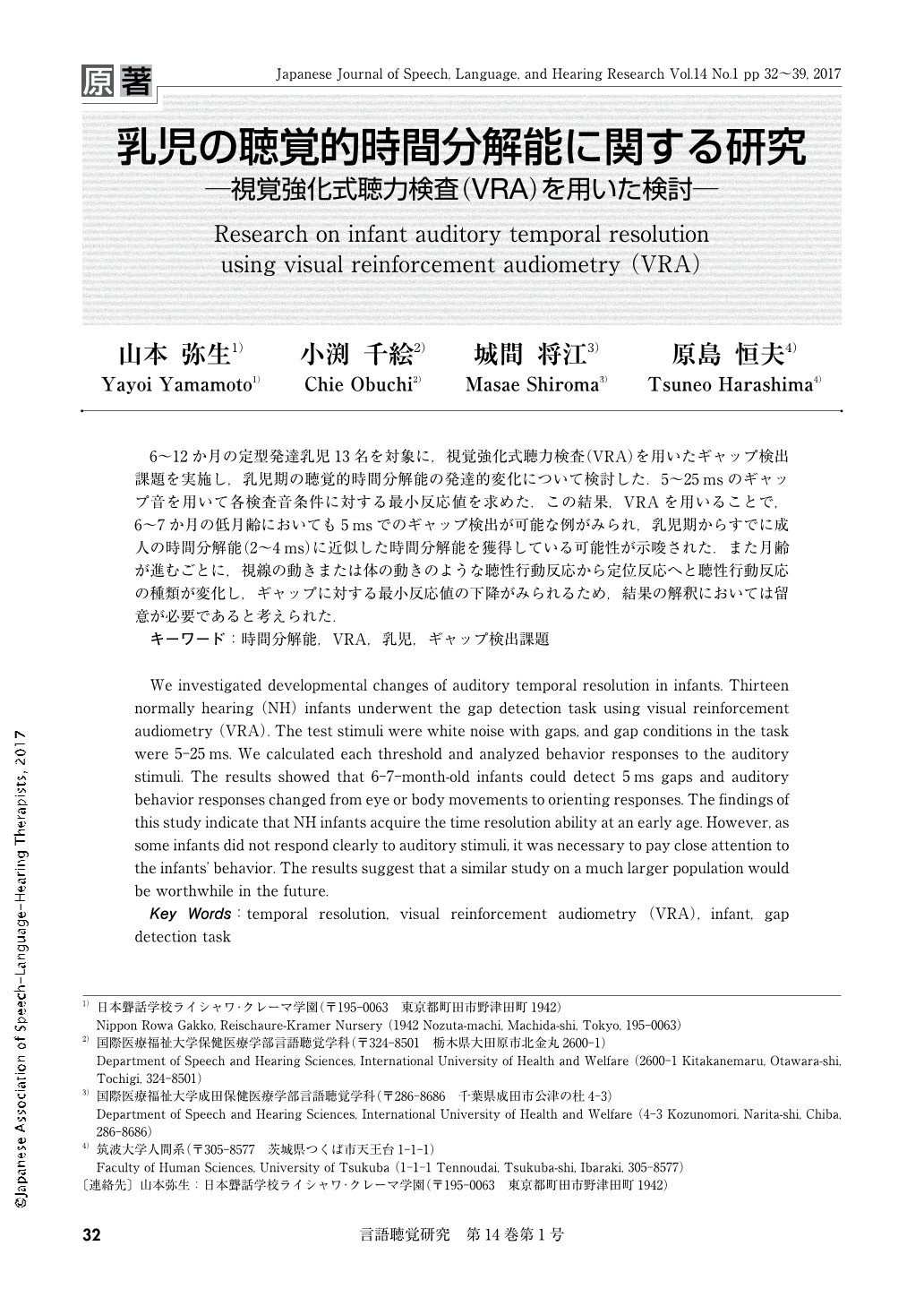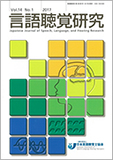Japanese
English
- 有料閲覧
- Abstract 文献概要
- 1ページ目 Look Inside
- 参考文献 Reference
6〜12か月の定型発達乳児13名を対象に,視覚強化式聴力検査(VRA)を用いたギャップ検出課題を実施し,乳児期の聴覚的時間分解能の発達的変化について検討した.5〜25msのギャップ音を用いて各検査音条件に対する最小反応値を求めた.この結果,VRAを用いることで,6〜7か月の低月齢においても5msでのギャップ検出が可能な例がみられ,乳児期からすでに成人の時間分解能(2〜4ms)に近似した時間分解能を獲得している可能性が示唆された.また月齢が進むごとに,視線の動きまたは体の動きのような聴性行動反応から定位反応へと聴性行動反応の種類が変化し,ギャップに対する最小反応値の下降がみられるため,結果の解釈においては留意が必要であると考えられた.
We investigated developmental changes of auditory temporal resolution in infants. Thirteen normally hearing (NH) infants underwent the gap detection task using visual reinforcement audiometry (VRA). The test stimuli were white noise with gaps, and gap conditions in the task were 5-25ms. We calculated each threshold and analyzed behavior responses to the auditory stimuli. The results showed that 6-7-month-old infants could detect 5ms gaps and auditory behavior responses changed from eye or body movements to orienting responses. The findings of this study indicate that NH infants acquire the time resolution ability at an early age. However, as some infants did not respond clearly to auditory stimuli, it was necessary to pay close attention to the infants' behavior. The results suggest that a similar study on a much larger population would be worthwhile in the future.

Copyright © 2017, Japanese Association of Speech-Language-Hearing Therapists. All rights reserved.


